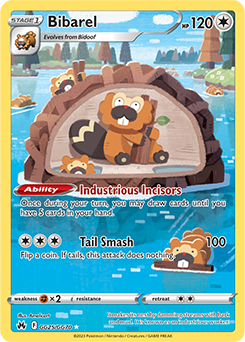It’s the BDIF For a Reason — Advanced Tips For Playing Charizard ex
As the Temporal Forces format began in the west, Charizard ex was completely dominating. The deck was projected to be good, but it exceeded all expectations by winning at EUIC, Orlando, Perth, and São Paulo with several other strong finishes in addition to the victories. Charizard requires a bit of setup and doesn’t hit too hard in the early game, but the card is just too broken. Charizard has tons of HP, deals plenty of damage (especially in the late game), and is very difficult to counter. Grass-type decks are uncommon due to a lack of good attackers, and most Grass-type Pokemon trade evenly into Charizard at best. Ability lock is left high and dry after the rotation of Path to the Peak, so there is very little standing in Charizard’s way. Charizard is generally very powerful, and as a result it is able to stomp most random decks.
Since Charizard decks rely on Charizard ex to attack and only rarely attack with other Pokemon, it would lead one to think that the deck is simple and linear. However, the reality is that Charizard is a very intricate deck that can take various lines of play and run circles around opponents with its bag of tricks. It’s very difficult to out-trade Charizard is an evenly matched contest of firepower, and the few decks that can contend with it can be outmaneuvered with optimal play. However, it’s important to be able to see those maneuvers. I see just about everyone make frequent mistakes while playing this deck, and after countless hours of playing it, I wanted to share some things I picked up.
Attacking turn two is good, but not always needed. I’ve seen countless players forego their turn-two Pidgeot ex either because they didn’t see it or because they chose to go with Charizard instead. This can sometimes be fine. For example, if you’re reasonably confident you can set up Pidgeot on the next turn anyway, you may as well take that Prize card this turn and not fall behind unnecessarily. However, Pidgeot ex is a ridiculously broken card that should usually be priority number one. Pidgeot enables you to do whatever you want — chain Charizard, disrupt at key moments, and set up big combos.
Stabilizing your board is the main goal, and you will naturally win once you’ve done this. A lone Charizard ex might be able to take a Prize card or two, but without Pidgeot or Bibarel, you’re left with a fragile theme deck that can’t do what it’s supposed to. Charizard is a deck that excels at making comebacks. The deck gets stronger when it’s behind on Prize cards, so this should come as no surprise. In addition to Charizard’s damage, the deck gets help from Iono, Roxanne, Counter Catcher, and Defiance Band when it’s “losing.” Going behind one or two Prize cards is no big deal if you’re able to fully set up your board.

Bibarel is insane. Bibarel should always be at least a somewhat high priority. For a while, I didn’t realize just how strong this card was because it was always overshadowed by Pidgeot. However, the combination of the two is incredible. In the event something happens to Pidgeot, the deck can still somewhat function as a Charizard / Bibarel deck. It’s particularly important in the mirror match, where both players typically aim to take out each other’s Pidgeot. If one player has Bibarel and the other doesn’t, they just win.
This concludes the public portion of this article.
If you'd like to continue reading, consider purchasing a PokeBeach premium membership! If you're not completely satisfied with your membership, you can request a full refund within 30 days.
Each week we post high-quality content from some of the game's top players. Our article program isn't a corporate operation, advertising front, or for-profit business. We set our prices so that we can pay the game's top players to write the best content for our subscribers. Each article topic is carefully selected, goes through multiple drafts, and is touched up by our editors. We take great pride in our program!

